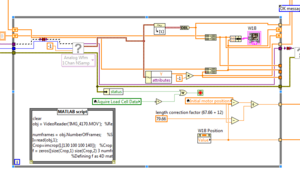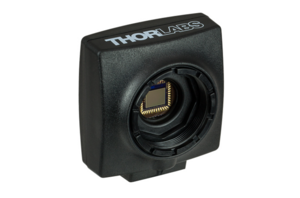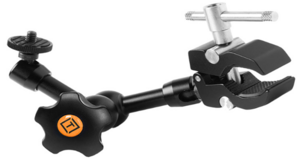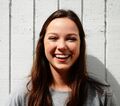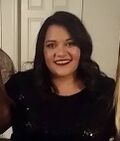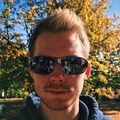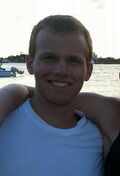Tendon Stress Apparatus
| Tendon Strain Bioreactor | |
| Client: |
|
| Team Name: |
|
| Faculty Advisers |
|
| Team Members |
|
Tendons are collagenous tissues that transfer forces from muscle to bone. Tendons have poor healing capabilities and can be easily injured due to overuse. In order to develop therapies for preventing injury and improving regeneration more knowledge must be gained on how mechanical forces influence tendon cell behavior.
Problem Definition[edit | edit source]
Our client has designed and built a mechanical bioreactor controlled by Labview to test mechanical properties of soft tissues such as tendon. Currently the client is able to measure the force applied to the tissue and the displacement between the grips holding the tissue. Our objective is to develop and design a non-contacting video system to measure the strain within soft biologic tissues in real time and improve the capability of the system already in place.
Project Requirements and Goals
- Camera resolution: less than 1 mm (between 0.5 mm and 1 cm is optimal)
- LabView must link to and utilize the non-contacting video system
- The system will be placed inside an incubator so all components must be hardened to humidity, moisture, and heat
- Our system must work for the length of time that a test will run which can be multiple hours
Background[edit | edit source]
Tendons are the tissues are responsible for transferring forces between muscle and bone. Tendon injuries are quite common among athletes, with causes ranging from chronic overuse to acute tears. The regenerative process for tendons can take over a year and often complete regeneration does not occur. This has led to a demand in clinical alternatives for replacement. Before mechanical tissue replacements can be engineered, more data is needed on the mechanical and biological factors that govern tendon injury and regeneration.
Project Learning[edit | edit source]
As our project progresses in development, we solve one problem after another. The following is a categorical breakdown of the project learning for each major conceptual milestone.
Camera[edit | edit source]
Originally, we wanted to do a GoPro type of camera. After the first Snapshot and talking with our client we decided a CMOS or CCD camera would be more logical. Through researching, we found that CMOS cameras would most likely be the way to go.
Below is the comparison of cameras we have researched or found used in similar video systems. We have listed what we believe to be some of the more important factors of the camera system. As you can see, they are only a few minor details that differ per camera.
| Specifications | DCC1645C | DCC1240C | Marlin F-131 B/C (DISCONTINUED) | Tucsen DigiRetina | Tucsen TrueChrome |
|---|---|---|---|---|---|
| Sensor | CMOS | CMOS | CMOS | CMOS | CMOS |
| Focal Length (mm) | 3.5-75, 18-108 with zoom | 3.5-75, 18-108 with zoom | ? | ? | ? |
| Read Out Mode | Progressive Scan | Progressive Scan | Progressive Scan | Progressive Scan | Progressive Scan |
| Resolution (pixels) | 1280 x 1024 | 1280 x 1024 | 1280 x 1024 | 1920 x 1080 | 1920 x 1080(Dynamic), 3264 x 1840(Static) |
| Sensitive Area (mm) | 4.61 x 3.69 | 6.78 x 5.43 | N/A | N/A | N/A |
| Pixel Size (μm) | 5.2 | 5.3 | 6.7 | 1.335 | 2.8 |
| Frame Rate (Free Run) (fps) | 24.9 | 25.8 | 25 | 25 | 30 |
| Dimensions (HxWxD in) | 1.91 x 1.73 x 1.01 | 1.59 x 1.26 x 1.63 | 2.28 x 1.73 x 1.10 | ? | ? |
| Weight (lbs) | 0.07 | 0.16 | 0.26 | ? | ? |
| Price | $365 | $1,160 | ~$1,100 | $550 | $1,040 (with monitor) |
Camera research is an aspect we continue to work on. As a team, we have decided the camera system is one of our top priorities and this will most likely be our biggest expense. We are hopeful to have a camera selected and purchased before the beginning of the second semester. This will allow us to move onto the next design phase of implementing the video system with the existing apparatus and computer programs.
Programing[edit | edit source]
Matlab
During the camera-to-Matlab integration process, the team spent some time getting to know the image capture and image processing toolboxes that Matlab provides (for a price, of course). With these toolboxes, the camera is able to digitally subtract pixel from pixel and mathematically determine the difference in pixel change.
Additionally, the team spent more time becoming comfortable with Matlab terminology and procedural equations.
Labview
Fall Semester Progress: The Labview code was given to us by our client and currently controls the load cell that can stretch the tendon at a constant load or with cyclic loading.
The interface for the MATLAB integration module is shown to the right. This module will allow a user to utilize MATLAB code without leaving the LABview window. One goal of this project is to create a seamless, straightforward system to allow for efficient data acquisition. Once complete, the LABview code combined with the integrated MATLAB code will be able partly control the apparatus, stream a live feed of the tissue being tested, and calculate the strain being applied over a time interval.
Spring Semester Progress: So far our programming has come along far enough that we are able to currently track the movement of a marked point. It is also able to plot the movement onto an x,y plot. Before purchasing our camera we were using a webcam. With the webcam, we were able to identify two different marked points but was not able to plot the two points separately. We are currently working on tracking both points independently of one another on a strain plot. Another goal of ours is to allow for reference distance points and to have the LabView code find those reference points as well. As of right now, we are working on integrating our newly purchased camera with our computers and software before we begin on the reference points or the independent point tracking.
Mounting[edit | edit source]
Some specifications for mounting the camera to the frame of the bioreactor include:
- The mounting system needs to be able to move the camera out of the way when the user is preparing the sample
- The camera needs to come back to a fixed location for image acquisition
- The mounting device needs to be able to support the weight of the camera
Our team will begin to put more emphasis on a mounting design in the second semester of senior design. We will test different potential materials for encasing the camera in the incubator to see if there is condensation formed that could interfere with the image.
Final Product[edit | edit source]
Camera
After careful consideration and evaluation we have purchased the THORLABS Compact DCC1645C CMOS camera(shown to the right) that is listed in the first column of the camera comparison table above.
We chose this camera because it is compact, lightweight, has a small pixel size, and a high resolution. It is also easy to use and connects to the computer using a USB.
Matlab
LabView
Mounting
The mount we have chosen for our project (shown left) is an articulating arm with center lock produced by Tether Tools. The mount is 7” long and is capable holding devices up to 4.5 lbs. The arm has ¼”-20 male threads on both ends of it, enabling it to connect to any ¼”-20 female receptor. The arm comes with a removable hot shoe adapter which can be used to attach it to a camera. One requirement for the mount was that it must be easy to adjust to any position inside the incubator. The articulating arm by Tether Tools can be moved quickly and easily and can be locked by turning a knob at the center of the arm.
The Team[edit | edit source]
| Picture | Bio | Discipline |
|---|---|---|
|
Gretchen is a 4th year Senior studying Biological Engineering at the University of Idaho. She was born in Boise, Idaho. Her hobbies include backpacking, skiing and looking at videos of cute animals. After completing her undergrad she plans on pursuing tissue engineering. |
B.S.B.E. | |
|
Kelie was born and raised in southeastern Idaho in a tiny town called Firth. She is majoring in Biological Engineering and also obtaining a minor in mechanical engineering. She has always enjoyed math and physics as well as biology. Outside of school, she enjoys spending time with my family, friends and pets, as well as traveling and baking. After she finishes her undergrad, she plans to pursue a career in prosthetics or bio-mechanics hopefully on the East coast. |
B.S.B.E. | |
|
Ben is a Senior Mechanical Engineering student at the University of Idaho. He is from Palmdale, CA. His hobbies include competitive dog grooming, pumpkin sculpting, and picking up what he's putting down after spending five minutes looking for it, even though he literally just had it. |
B.S.M.E. | |
|
Craig is a 4th year Senior Mechanical Engineering student at the University of Idaho. He was born in Dallas, Texas. His hobbies include skiing, swimming, chilling, tennis, dogs and astronomy. |
B.S.M.E. |
Resources and Documentation[edit | edit source]
Meeting Minutes
First Semester
Other Documents
Team Contract

